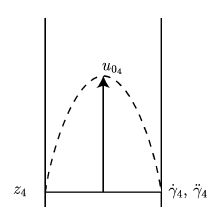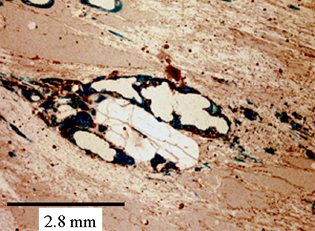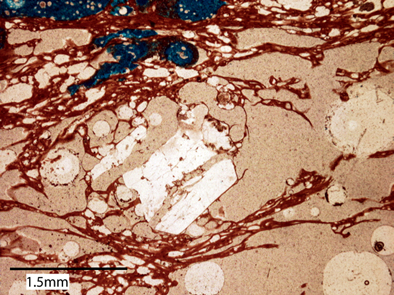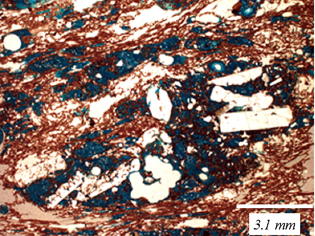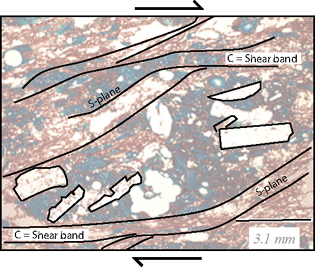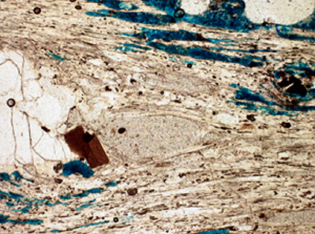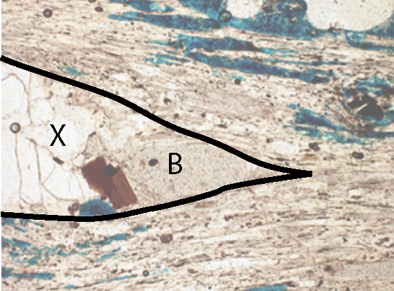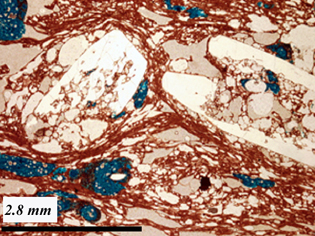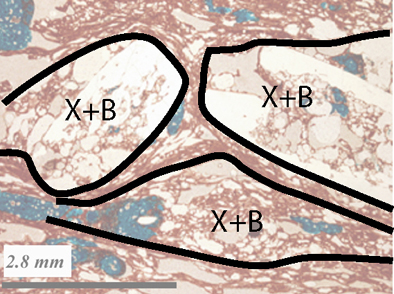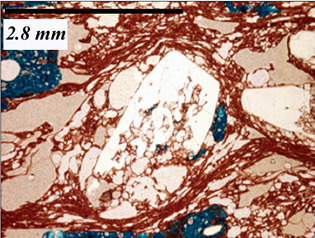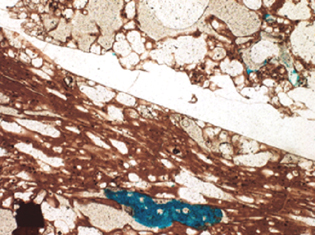Heterogeneous Shearing of Three-Phase Vesicular Lava: Rheological Implications
Roberto Weinberg, Monash University, Australia
Adrian Pittari School of Geosciences, Monash University, Australia
| The
shear viscosity of a vesicle-rich
magmatic suspension is an
important control on the dynamics of volcanic conduit flow and
eruption, and depends on the strain rate through the capillary number,
Ca (a measure of the relative importance between viscous stress and
interfacial stress measured as the strain rate times melt viscosity
times vesicle radius divided by surface tension). For Ca>1,
vesicles
decrease the strength of the suspension. For Ca<1, vesicles
increase
the strength of the suspension, because surface tension causes them to
act as solids with no-slip at their surfaces (e.g. Llewellin and Manga,
2005, JVGR 143).
Studies investigating the effect of Ca on conduit flow leading to eruption, take the rheology of a two-phase, vesicle-melt suspension as the basis for the calculation and use a parabolic flow velocity profile, applicable for isoviscous fluids, to model magma flow in a conduit. In a recent study Vedeneeva et al. (2005, GRL 32) demonstrated that shear heating at the margins of flow within a conduit may significantly weaken the magma and impact on flow rates and the modify the velocity profile in the conduit from parabolic to piston like with a core of nearly constant velocity, surrounded by a rim of hot, low viscosity magma, characterized by high strain rates.
Here, we investigate the structures developed in a three-phase suspension which includes crystals as well as vesicles and melt, with important implications for the rheology of magmas. Juvenile pyroclasts, with abundant vesicles and crystals, from the Abrigo Ignimbrite, Tenerife (Pittari, A., 2004, PhD Thesis, Monash University, Clayton, 327 pp.), record heterogeneous shearing with the development of high strain shear bands in melt- and vesicle-rich areas, surrounding low strain sigmoidal crystal- and vesicle-rich domains. The partitioning of strain implies that strain rate and therefore Ca is not constant throughout the sample. Melt-vesicle rich zones develop into high-Ca, low strength shear zones, and crystal-vesicle rich areas develop into low-Ca strong zones of low strain rate.
The main implication of this finding is that three-phase magma suspensions have a strain weakening property caused by strain partitioning and development of a connected network of high strain rate shear bands. This further implies that calculations on conduit flow based on smooth variations of strain rate variations across the conduit (Fig. 1), must be corrected by taking into account strain partitioning and its weakening effect. The effect of strain partitioning is that Ca is effectively increased when compared to homogeneous straining. Recent studies (Polacci et al., 2005, EOS 86, 37, p. 333, Vedeneeva et al., 2005, GRL 32) have emphasized the role of shear heating in controlling eruption style in a conduit. Strain partitioning as recorded here would have to be part of a feedback effect whereby shear heating leads to strain partitioning, and that in turn further increases shear heating, stabilizing the shear zones, increasing the strength contrast between shear zones and low strain zones, and decreasing the general strength of the suspension as a whole.
Two main points are demonstrated below: a) the nature of shearing of volcanic rocks and shear sense indicators given by flow asymmetry, b) the partitioning of strain into crystal-poor, melt- and vesicle-rich zones where the vesicles are stretched, surrounding crystal- and vesicle-rich weakly strained zones where the vesicles tend to be equidimensional with rounded margins. Partitioning of strain into shear zones through the weaker minerals/phases is well-documented in rocks. We argue that in volcanic rocks this may be particularly well-developed because of the very strong change in behaviour of vesicle suspensions as a function of strain rate.
CLICK ON ANY PHOTO FOR HIGH RESOLUTION VERSION |
Conduit Flow in Eruptive Systems
Strain Partitioning and Shear Indicators
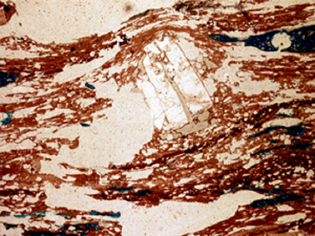
|
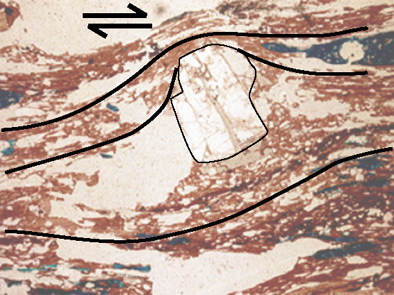 |
| G. Photomicrograph of a crystal and a large vesicle forming a sigmoidal zone within dextral shearing. Plane polarized light, base of photograph is 6.2 mm. | H. Line drawing. |
